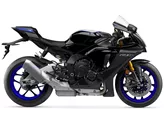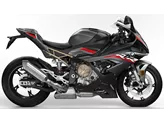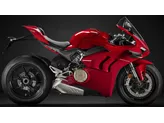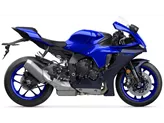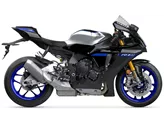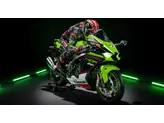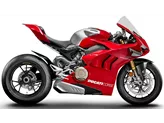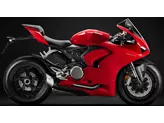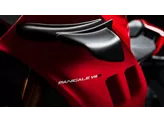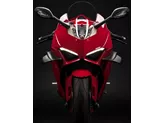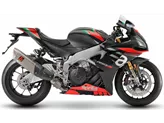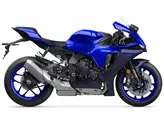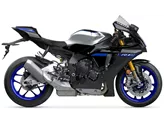Yamaha R1 2016 vs. Ducati Panigale V4 2018

Yamaha R1 2016

Ducati Panigale V4 2018
Overview - Yamaha R1 2016 vs Ducati Panigale V4 2018
The Yamaha R1 2016 and the Ducati Panigale V4 2018 are both powerful and high-performance supersport motorcycles. They have several similarities in terms of their technical specifications, such as having a 4-cylinder engine with 4 valves per cylinder and upside-down telescopic fork front suspension. However, there are also some notable differences between the two models.
In terms of engine power, the Ducati Panigale V4 2018 has a slight advantage with 214 HP compared to the Yamaha R1 2016's 200 HP. The Panigale V4 also has a higher torque of 124 Nm compared to the R1's 112.4 Nm. Both bikes have a similar displacement, with the R1 having 998 ccm and the Panigale V4 having 1103 ccm.
The Yamaha R1 2016 has a compression ratio of 13, while the Ducati Panigale V4 2018 has a slightly higher compression ratio of 14. This higher compression ratio in the Panigale V4 may result in better performance and efficiency.

Yamaha R1 2016
In terms of chassis, both bikes have an aluminum frame, but the Yamaha R1 2016 has a Deltabox frame while the Ducati Panigale V4 2018 has a monocoque frame. The choice of frame design can affect the handling and overall weight distribution of the motorcycle.
Both bikes have double disk front brakes, providing strong stopping power. The Yamaha R1 2016 also features advanced rider assistance systems such as launch control and traction control, while the Ducati Panigale V4 2018 only has ABS.
In terms of dimensions and weights, the Ducati Panigale V4 2018 has a slightly longer wheelbase of 1469 mm compared to the R1's 1405 mm. The Panigale V4 also has a lower seat height of 830 mm compared to the R1's 855 mm. Both bikes have a similar fuel tank capacity, with the R1 having 17 liters and the Panigale V4 having 16 liters. The Panigale V4 is slightly lighter with a kerb weight of 198 kg compared to the R1's 199 kg.

Ducati Panigale V4 2018
In terms of strengths, the Yamaha R1 2016 is known for its lively handling, high-revving and precisely controllable engine, and excellent electronics package. On the other hand, the Ducati Panigale V4 2018 is praised for its powerful engine with charisma and great manners, pleasant upper body position, and a sufficiently dimensioned chassis for the country road. It also has a powerful but not intrusive sound and good wind protection.
As for weaknesses, the Yamaha R1 2016's only notable weakness is that it only has a shift assistant for upshifting. On the other hand, the Ducati Panigale V4 2018's weaknesses include the seat getting warm especially in city traffic and the engine/clutch feeling a little rough in tight hairpin bends.
Overall, both the Yamaha R1 2016 and the Ducati Panigale V4 2018 are highly capable and impressive supersport motorcycles, each with its own unique strengths and weaknesses. The choice between the two ultimately depends on the rider's preferences and priorities.
Technical Specifications Yamaha R1 2016 compared to Ducati Panigale V4 2018
Pros and Cons in comparison
Pros and Cons in comparison
Yamaha R1 2016

Yamaha's high-tech rocket is still a technological leader in 2016. Radical, polarising and fascinating, it sets powerful lap times. It is closer to the race bikes than the other 1000s. In the meantime, no one grumbles about the front. Without the "M", it is the best choice for those who don't need Öhlins anyway, or the best choice for those who are planning a racetrack conversion anyway and like to install "normal" Öhlins hardware without electric stuff.
Ducati Panigale V4 2018

The Panigale has become much more accessible in the 2018 V4 version than before. The engine, in combination with the electronics package, is still not as flawless and sterile as an inline four, but in practice it is a real blessing for Ducatisti - and a positive surprise for riders of other brands. The Panigale V4 also surprised with tolerable riding comfort on the country road and a pleasant level of stability. Progress here was clearly in the right direction. The new V4 is stronger and faster but also easier and more pleasant to ride.
Price Comparison Avarage Market Price Yamaha R1 vs Ducati Panigale V4
There are a few key differences between a Yamaha R1 2016 and a Ducati Panigale V4 2018. In terms of price, the actual average price of a Ducati Panigale V4 2018 is about 20% higher. A Yamaha R1 2016 experiences a loss of 670 USD in one year and 590 USD in two years of ownership. This is offset by a loss of 1,130 USD and 2,480 USD for a Ducati Panigale V4 2018. Compared to Ducati Panigale V4 2018 there are more Yamaha R1 2016 bikes available on the 1000PS.de Marketplace, specifically 6 compared to 5. It takes less time to sell a Yamaha R1 with 73 days compared to 91 days for a Ducati Panigale V4. Since model year 2005 1000PS.de editors have written 80 reviews for the Yamaha R1 and 18 reviews for the Ducati Panigale V4 since model year 2018. The first review for the Yamaha R1 was published on 4/28/2003 and now has more than 3,900 views. This compares to more than 131,500 views for the first review on Ducati Panigale V4 published on 11/5/2017.



